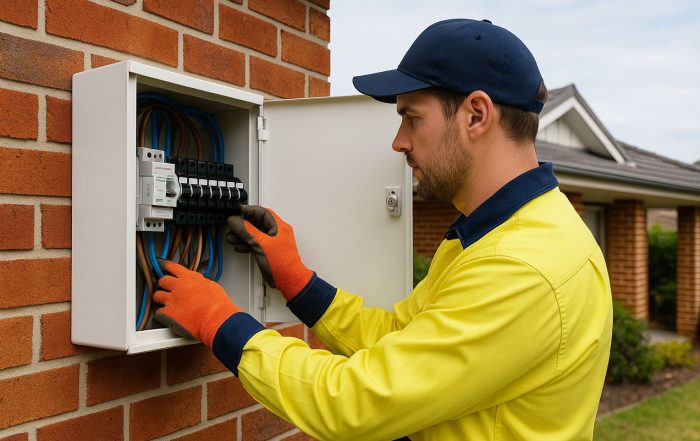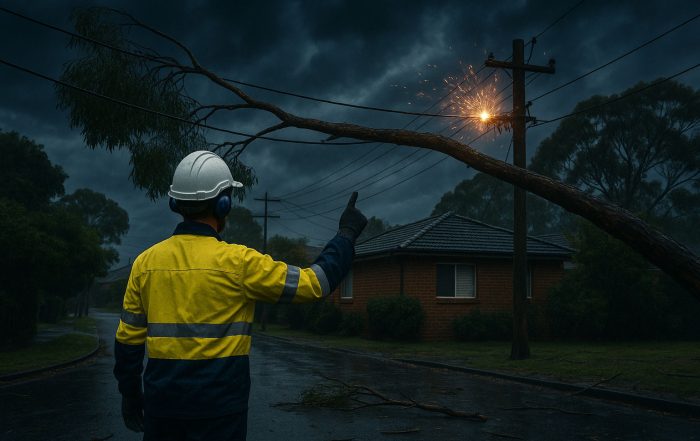What is a Power Surge?
What is a Power Surge?
Our modern life seems to revolve around our electrical appliances. Any interruption to our appliances or devices can be a huge disruption to our day. And a power surge can be more than just disruptive – it can cause damage to equipment, data loss, or even a house fire.
We’ll walk you through what power surges are, how they happen, and give you some steps you can take to protect your home and your electrical appliances from them.
What is a power surge?
A power surge is a super quick spike in your home’s electrical current, usually lasting less than a thousandth of a second, caused when the flow of electricity is unexpectedly interrupted or fed back into the system rather than being drawn out. The voltage of the surge can vary from around a hundred, up to thousands of volts.
What causes power surges?
Power surges have many causes. Our voltage here in Australia runs at 240 volts and 50 Hz, but many countries run at a different voltages, and plugging those appliances into a power outlet without adequate protection can result in a power surge. Even with standard appliances around the home, high-powered electrical devices like electric heaters or air conditioners can cause power spikes when turned on or when their motors kick in.
Home maintenance can also play a role in power surges. Faulty or old electrical wiring that affects your home’s ability to withstand power spikes is to blame for many power surges. Also, if a past power surge tripped circuit breakers and damaged them in the process, that raises the risk of damaging power surges in the future.
Environmental factors, like lightning strikes or tree limbs touching power lines, can also cause power surges. A single lightning strike, no matter where it hits, can result in a power surge strong enough to burn out your internet router, or your television. Jeez, even some animal accidentally climbing into a transformer somewhere (rest in peace little buddy) could cause a power surge in your home.
Are power surges dangerous?
Power surges can cause damage to your appliances, ranging from instant loss of functionality to quality degradation over the course of years. Without proper electrical protection, power surges can even start fires.
What are the warning signs of a power surge?
Power surges occur so quickly that they can’t really be stopped in their tracks, but they can be prepared for and protected against. These are some indications that you’ve experienced a power surge:
- Your device’s lights or clock is flashing
- Your surge protector or power strip requires resetting
- You see tripped circuit breakers
- Your device suddenly loses power or resets
- You notice a burnt odor around an appliance or power source
How can I keep my home safe from a power surge?
There are several things you can do around your home to protect your appliances and minimise the risk of damaging power surges.
Choosing a surge protector
The easiest preventative step you can take to protect your expensive or important appliances is to plug them into high-quality surge protectors. A surge protector diverts excess energy from an electrical spike towards the grounding wire in your home, away from your appliances.
It’s important to note that not all power strips include surge protection. Surge protection capabilities are measured in joules, so make sure you’re buying the right level of protection for your appliances. If you plan on plugging lots of appliances into the same surge protector, or if your home experiences regular power spikes, look for one that’s rated 600 joules or higher.
If you’re looking for the technology of a surge protector in a more permanent fixture, transient voltage surge suppressors (TVSS) might be right for you. These are wired into your home’s outlet boxes and provide the same protection as plug-in surge protectors. Some even come with lights or alarms to let you know a power surge has occurred.
However, not even the best surge protector can guarantee protection against all power spikes. During a power outage, it’s a good idea to unplug and turn off your appliances and equipment at the power point. Plug them back in after service has been restored to protect them from potential power surges caused by the flow of electricity returning to your appliances. If you live in an area prone to electrical storms, consider a whole-house surge protector, also known as a panel-mounted surge suppressor. This device is hardwired to your main electrical panel and protects your entire home from power surges occurring in the main power line.
Other ways to protect your home and appliances
- Talk to a licensed electrician to see if your home’s electrical wiring or circuit breakers need to be replaced.
- Avoid cheap appliances, wiring, and safety switches. Cheap wiring in unreliable appliances can damage other appliances. Protect your home and your other appliances by investing in high-quality equipment.
- Unplug appliances when not in use. Not only will this guarantee protection from power surges, it’ll save you money on your power bill.
Protection against power surges is an investment not only in your appliances, but in your safety as well. The best protection you can give your home is to have a professional electrician evaluate your home’s unique electrical system and any risk factors that could lead to power surges. Faraday Group has been providing 5-star Level 2 electricians and emergency electricians in Sydney for over 60 years. Contact Faraday Group today for quality home electrical services and enjoy the peace of mind that comes from knowing your home, appliances, and your family are safe and protected.



